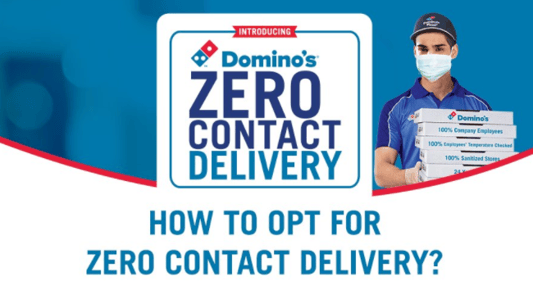Marketing in a downturn leads to growth. No, really.
April 2, 2020

As America entered the Great Depression, the breakfast cereal company Post was the top brand in its category. Then the economy tanked, and Post reacted the way many marketers do in a downturn. They cut back on advertising. Way back.
At the same time, a scrappy rival named Kellogg’s adopted a different strategy. They doubled their ad spend to introduce a new cereal called Rice Krispies. What happened? Kellogg’s profits rose 30% as the economy cratered, and they took over the category. Meanwhile, Post’s sales dropped through the floor.
To repeat: Kellogg’s grew profits by 30% during the Great Depression by increasing advertising.
Pulling back on marketing when the economy takes a tumble may seem like the prudent thing to do. In many cases it’s also the worst move you can make, and the proof is everywhere. Consider these examples:
- When McDonald’s decided to pull advertising during a recession in the 1990s, Taco Bell and Pizza Hut rushed into the void, growing sales by 40% and 61% respectively, while McDonald’s sales dropped nearly 30%.
- In the same recession, peanut butter brand Jif grew sales by 57% and Kraft Salad Dressing grew sales by 70%. How did both brands do it? By increasing advertising.
- In 2009, Amazon sales shot up 28% despite the downturn, largely through the launch and promotion of the Kindle. The product offered a terrific value proposition– a low cost new way to read. Even though the recession was in high gear, it was a massive marketing success.
As The New Yorker pointed out during our last recession, “Recessions create more opportunities for challengers, not less.” That’s because dominant brands tend to prioritize protecting what they have over growth, leaving the door open to smaller, smarter rivals.
In one of the largest academic studies ever carried out on the subject, two Oregon State University professors analyzed the performance of 3,000 companies over the course of twenty years, through five distinct recessions. They noted the tendency among firms to pull back marketing in a downturn, and wanted to assess the effectiveness of this strategy.
The study uncovered two important realities for brands. One, brands that increase advertising in a downturn experience sales growth that lasts up to three years after economic conditions improve. And two, companies that pull back actually cause their short-term sales to plummet, effectively creating self-inflicted wounds. In other words, the recession may have less to do with sales than your reaction to it.
“Specifically,” the study concludes, “the link between advertising and promotion spending increases and future earnings is stronger and more immediate during recessions.”
It’s a lesson worth noting right now. As the COVID-19 crisis has developed, you’ve likely noticed how the advertising landscape has changed. Not just in terms of the messaging itself—a topic we covered here recently—but also in terms of who is dominating the ad space, and how they’re doing it.
We know aggressive marketing through a recession works. Now let’s take a look at why.
People still buy in downturns.
Marketers often see what they do in direct correlation with the broader marketplace. If the economy is down, that means my sales have to go down, right? Not necessarily. While purchasing habits may change in a downturn, purchasing does not actually go away.
This is especially true for consumer goods. While many may be spending less per person, with lower media costs, you’ll be paying less per sale to acquire new customers. When is that not a smart investment?
People seek value in downturns.
Brands that offer value in downturns win. But “value” doesn’t simply mean lower prices. It means adjusting what you offer to match shifting customer needs, thereby providing greater value to them.
According to one study, 56% of Americans are either maintaining or increasing their spending on takeout and meal delivery right now. Smart dining brands have reacted with offers like “zero touch pizza delivery” and curbside pickup. You can see it on the local level too, as home services companies have evolved their offerings for people living through current "shelter in place" orders.

Forget two-for-one thin crust. This is what value looks like today in the pizza business.
Of course, a great promotional price doesn’t hurt either. The goal in providing value is to keep people engaged with your offering, by keeping your offering relevant to their changing needs.
While people may buy less, more people may buy.
How’s that for a tongue twister? As the demand for value grows, people open themselves up to products, services, and brands they might have ignored in different times. That means whole new audiences to engage.
So long as you offer real value, you may find yourself with a target audience that’s much wider than the one you typically reach. Car buyers who normally prefer a foreign vehicle might now be attracted to Ford’s current financing options. Conversely, folks who typically view Mercedes as an aspirational brand could be swayed to purchase with the right value proposition.
Across categories, audiences that have shown historical preferences for other brands, products, or services could be more open to alternatives. People who have never baked bread in their lives are suddenly stocking the pantry with bread flour and yeast. Instant coffee, canned soups, and shelf-stable milks are other examples of packaged goods currently transcending their traditional target audiences. Instant coffee, in particular, has managed to capture the stuck-at-home zeitgeist. Whipped instant coffee drink, anyone?

The Dalgona whipped instant coffee craze has become a stay-at-home viral sensation, and a boon for instant coffee brands.
The upside to more value seeking in the marketplace is that more people will potentially buy your products.
Take advantage of the quiet to make a little noise.
As Forbes points out, you may notice that the general “noise” level tends to drop in a downturn. That’s certainly true today, with fewer brands dominating more of the media landscape.
With less noise, it becomes far easier to stand out and garner attention. In some cases, this is the perfect time to re-position a brand or launch a new, value-driven product. Think Rice Krispies and Amazon Kindle, for example.
Consider the fact that much of your competition may have pulled back in an environment where media costs are low and the ability to grow awareness is high. That’s a big opportunity for you.
Market share is easier to capture in downturns.
Long term, this may be the most important element to any downturn marketing strategy. Market share is now easier to attain. As your competitors pull back, they cede any top-of-mind advantage they once enjoyed. Just as Kellogg’s, Taco Bell, and Pizza Hut did in the past, keep a sharp eye on bigger, better-funded competitors. Are they backing off, hunkering down, and ceding territory? If so, this could be the time for you to take it.
History has made it clear that brands that stay aggressive in downturns are the ones who come out on top. Reporting by Bain found that twice as many firms take over leadership of their categories in recessions versus other periods. The big question is, will your brand be one of them?
And when you’re ready to map out your strategy for growth during these uncertain times, the team at Slingshot is here to help.





